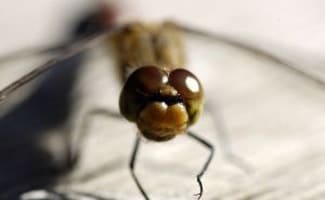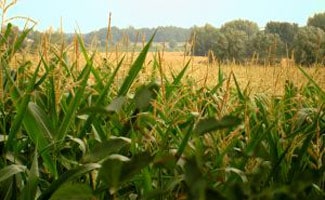Why Global Warming Causes Increase in Bugs, Insects and Flu
 We have global warming to thank for an increase in the rate of bug bite related infections. Bugs thrive in warmer climates, including ticks that carry the potentially fatal Lyme disease and perhaps even flu bugs. As winters shorten, ticks are showing up earlier each year and leaving later. As a result, the number of cases of Lyme disease has doubled in recent years.
We have global warming to thank for an increase in the rate of bug bite related infections. Bugs thrive in warmer climates, including ticks that carry the potentially fatal Lyme disease and perhaps even flu bugs. As winters shorten, ticks are showing up earlier each year and leaving later. As a result, the number of cases of Lyme disease has doubled in recent years.
Flu and Cold Epidemic Highest in a Decade
And not just insect bugs but also sick bugs are on the rise. With January 2013 seeing the highest rate of flu doctor visits in more than ten years, an epidemic has been declared in 44 states so far. The symptoms are far worse than in past years and the flu shots did not seem to cover the strain that is affecting most flu sufferers. In fact, even many of those who are not sick with the flu are still suffering from the worst cold on record in years. And to make matters worse, the peak of flu season is not even here yet, based on past years’ peaks in early February.
Warmer Winter Might Be Cause for Extreme Cold & Flu
One might surmise that given the warmer temperatures we have experienced this winter season, perhaps less germs have died. If so, perhaps more germs were able to breed to create this new extreme strain of flu and cold that has people suffering for weeks on end this year. Cold and flu symptoms that normally last 5-7 days are lasting up to two weeks and beyond, even in people who are otherwise considered healthy. We can hope that a deep freeze and more quarantine from one another might help to reduce the extremely active nature of this sick bug.
If you are not well, please rest as much as you can and stay away from others, as this flu and cold are both extremely contagious. Also drink lots of fluids to stay hydrated and push the illness through your body.
Lyme Disease, West Nile Virus, Dengue Fever, Zika Virus
And what about those other pesky bugs and insects? Just how dire is the effect of global warming on the increase of bugs and insects? Consider that West Nile Virus, Dengue Fever and Zika also require dry and hot climates to survive and spread. As warmer temperatures spread, diseases previously isolated to warmer regions will spread across continents and infect many more people, including those completely unready to receive treatment.
You can protect yourself by using bug repellent, avoiding stagnant water, and checking yourself for ticks after being outside. A tick can roam around your body for hours before biting in, and will often find a place on your body where it won’t be readily visible (such as your back, or behind your legs, etc.).
Insects’ Habitats Spread with Warmer Climate
Insects such as the green shield bug (pictured above) is usually isolated to areas that include North America, the Mediterranean, the Middle East, Australia, and Africa. But a couple of years ago the bug started showing up in the United Kingdom – in areas that historically were too cold to support it. Despite it being regularly imported by travelers, it was always too cold of a climate to allow the green shield bug to survive. Not any more, and to the detriment of England’s framers, as the green shield bug is known to eat and destroy all kinds of crops.
How the Heat of Summer Impacts the Insect Population
Adaptation
All living things are marked by their ability to adapt to the environment. Those who cannot adapt will eventually die out. Insects are living things and because of this, they follow the same rules. Some of the factors that impact how living things adapt are food supply, temperature, water supply, and population. Some of these things are relative to each other, which means that they have an impact on each other. For instance, a change in the population of flowers will result in a reduced population of bees in the area.
Heat and Insects
The heat itself may not impact insects the way it does human beings. Insects do not sweat, but they do respond to the heat. You can witness this by listening to the buzz of bees’ wings inside the hive as they use their wings to try to cool the hive. Some insects actually thrive on the heat. For instance, you might notice that flies are more visible in warmer areas. Insects may have to adjust to the heat, but it is more the impact that the heat has on the environment than on the insects themselves which will cause a change in their behaviors.
Drought and Heat
This year, the heat has been almost intolerable, but to make matters worse, there has been very little rain. The impact of this can be seen all around you as you observe the crops and landscaping that have been impacted by the combination of a lack of water and high temperatures. Insects are resourceful enough to go where they must and modify their eating habits to adapt to a food supply that is now more limited than in previous years. This can cause it to seem like there are less insects than usual, but in reality they may have just changed location to better serve the dietary needs of their population. Insects have preferences too. They might prefer a flower’s nectar, but be able to survive on the sap of a pine tree.
Water Supply
One of the most important aspects of the heat this year is the lack of water supply that accompanies it. Many insects like mosquitoes, lay their eggs on the surface of the water. If the water supply is limited, the insects will simply migrate to an area where it is not limited. This will result in the lack of a population in one area where the insect population is normally quite large, and an increase in the insect population in another area where the insect population is normally meager.
How Does the Insect Adaptation Impact Us?
Believe it or not, we need insects to fully complete the cycle of our environment. For instance, consider your garden. While insects can do damage to your garden, they also help it by eating nutrients in the soil and leaving their waste behind. However, these insects also need a water supply, which means they may have to go deeper into the soil to get moisture during a drought. Or, they may vacate the area altogether in search of water. Since they are so small, they may be able to survive off the dew on the plants, but may not thrive as they usually do.
Even the insects that are harmful to you and things like your garden are also helpful to the planet because they are part of the circle of life. Many birds live off of insects. Larger animals live off the birds and even larger animals live off of the animals that eat the birds. Humans consume the largest of these animals, so the insect population can have an impact on us in this manner.
Why Have Some Insect Populations Grown?
Just as the heat and drought in general may cause a decrease in the ability of insects to reproduce, the weather before the drought caused an increase in the population of other insects. For instance, ticks are more numerous than usual. The early spring caused them to come out of their dormant stage early and begin reproduction early. Because of this, there has been an increase in the tick population, making them almost desperate in their need to seek out a food supply.
Insects and Disease
The weather has an impact on even the smallest of organisms. Some bacterium and viruses thrive on the cold, while other thrive on the heat. The mild winter that we experienced before the spring caused an increase in the population of several viruses and bacterium. This is because these organisms lay dormant during cold times, and then become more active and populous when it gets warmer. Such organisms are now thriving because they are experiencing the perfect conditions for reproduction.
Insects are known for their ability to transport disease in the form of viral and bacterial infections. What this means for humans is that we need to show extra caution when outdoors. Insects who cannot meet their survival needs in areas that are not densely populated will migrate to more populous areas. They will then be able to infect humans directly or indirectly as they infect the animals that humans consume breed, or just have as pets.
What Can Humans Do?
You need to be extra careful this year. Make sure that you are not accidentally supplying a food source for dangerous insects to thrive in. Wear protective clothing or some other type of protection when you are going to be outside. Keep your pets and family up to date on their shots. Check yourself, your family, and your pets on a regular basis to make sure there are no ticks thriving in anyone’s personal space.
Monitor the amount of water you leave out. While you should keep fresh water outside for the animals around your home, stagnant water is the perfect breeding ground for pests. In fact, you may even want to add a bit of vinegar to your dog’s food dish to keep bugs at bay.
What About the Winter?
So far in this article we have addressed the effects of summertime and global warming on insect and bug populations, but are we free and clear when it comes to winter time?
Global Warming and Winter Weather
According to the National Wildlife Foundation, global warming is having a varied effect on weather across the United States particularly. On average winters are being cut shorter and what winter weather we do experience is much milder than it once was. This seems strange in comparison to the drastic changes that global warming has had on hurricane and flood activity. Areas that are referred to by the National Weather Service as “snow belt” areas are still experiencing snowstorms and areas to the North of these snow belts are even experiencing harsher weather but as polar as these effects are, they all influence bug and insect activity.
Earlier Spring Time and Warmer Weather
According to data collected by the National Wildlife Foundation, springtime has been arriving an average of 10 to 14 days earlier than it did some 20 years ago. This arrival of springtime is preceded by an increase in temperatures that range from 1 degree to 6 degrees Fahrenheit throughout the United States. These warmer temperatures and longer spring times caused by shorter winters all impact the activity of insect groups that take their cue from external temperatures. Many variations of insects such as lady bugs, green bottles, blue bottles and house flies will hibernate in warm crevices during the winter. Once temperatures rise to around fifty degrees however, these insects will take their cue to mill around.
Other insect types such as the June bug, young queen bumblebees and most ants will hibernate underground during the colder months to avoid freezing temperatures. As temperatures increase however, these insects are lured above ground.
Why Global Warming Winters Are Bad For Insects and People
Where global warming during summers are generally bad for people due to the increase in disease carrying insects, global warming winters are bad for both insects and people. Global warming’s impact on winter weather often results in winters that are periodically warm and then cold. This variation in temperature often leads to hibernating insects coming above ground mistakenly believing that spring is upon them, only to freeze when the warm spell is over. As these fluctuating temperatures kill off bug populations many beneficial insects are affected by dwindling populations. This decrease in certain bug populations leads to fewer of them at the beginning of spring, a time when many of these insects are beneficial to nature. Take for example young queen bees. Warmer snaps during winter that kill off young queen bees result in fewer queen bees to build hives in early spring, a time when large numbers of bees are needed to pollinate flowering plants. As fewer bees are available to pollinate, humankind suffers as well as many of the basic foods that we rely upon require pollinating and with fewer bees, there are fewer of these foods available during these years.
Why Global Warming Winters Are Bad For People
Milder winters that also come as a result of global warming are causing havoc for human populations as well. As warmer temperatures arrive earlier, many insects are able to expand in to more Northern states in the United States. Where usually these insects would be “kept in check” by frosts and colder temperatures as weather warms up these insects are now able to travel further north. This has a negative impact not only because of the effect these insects will have on local crops, but it also poses health risks to people in these areas. Areas that did not have to be worried about Lyme disease during colder months now have to be concerned about it as the ticks responsible for carrying this disease expand their range.
Why Global Warming Winters Are Bad For Plants and Crops
We have already addressed the fact that warm snaps during winter can greatly impact the pollination of plants; however, plants and crops also suffer from milder winters. As temperatures increase during winters, increasing numbers of pest insects become active and expand in numbers. As they do, they all require food sources which include trees, plants and crops. These larger insect populations will feed on these sources and often destroy them completely. One example of this type of decimation is the pine bark beetle that has managed to infest pine forests in Alaska, the Western United States and Canada.
Controlling Bug Populations in Winter
The milder winters that are now upon us, in addition to the rapid cycling temperature changes, are not something that we can find a short-term solution to. What we can do however, is control the side effects that are caused by these things while also treating the cause of these symptoms in the first place. As an eco-conscious individual it is up to you to not only contribute to a healthier planet and reduce the effects of global warming, but also do what you can to help the planet along in the healing process. One such step that you can take is educating yourself about local insect populations and watch for early signs of these bugs when warmer winter weather shows its face. Local pests should be controlled using environmentally friendly methods and local crops, plants and trees should be protected against infestations. There are many natural solutions that can be used to target pest insect populations so that crops, plants and trees can be allowed a reprieve from newly awakened bug populations. These solutions can be purchased from your local eco-friendly grocery store or gardening center. Be sure to know what pest insects you are protecting against and make sure that you are not discouraging healthier insect populations.
It is also crucial to be aware of the potential for illness and disease as carried by insects like ticks during warmer winter months. As these insects become more prevalent in larger territories, the potential for them to spread Lyme disease is growing. Always check family pets for ticks and check each other after spending time outdoors as well to prevent the potential for developing this awful illness.



